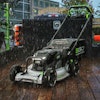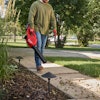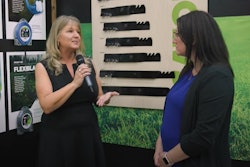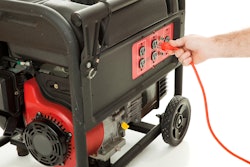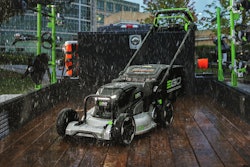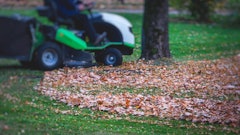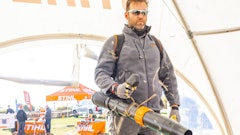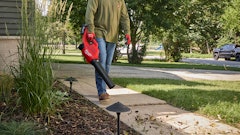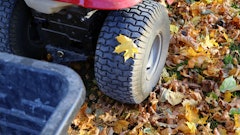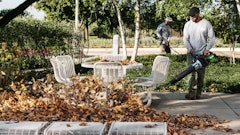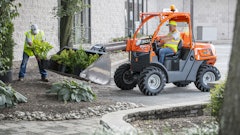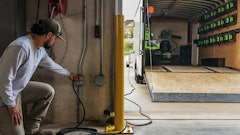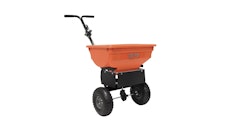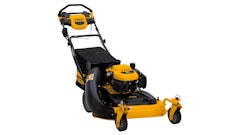
Carissa Gingras, director of marketing, North America | Forestry, Lawn & Garden, Oregon Tool, lays out what the landscape industry looks like as a whole, where it's going and more.
Green Industry Pros: How did this past year turn out for the landscape industry as a whole? How did this year go for your company specifically?
Gingras: The 2020s have seen some record sales years for the landscape industry, especially during COVID when homeowners literally watched their grass grow, and they had time on their hands to focus on improving their yards. In 2022, we started talking about business returning to normal, but we are quickly realizing the new normal is not a static state. It’s all about adaptation and change.
2020 was all about managing allocations and inventory, 2021 and 2022 were all about dealers loading up on the products they couldn’t get in 2020, and 2022/2023 were abnormal weather years. There doesn’t seem to be a normal anymore.
At Oregon Tool our “new normal” is a focus on responding to this dynamic environment. We have a solid plan A, but we are also always thinking about a plan B. One of the factors benefiting parts businesses like Oregon Tool right now is that contractors are still focused on inflation and its impact on business. They need to hang on to their money and in these environments, parts businesses like ours are doing well because users are repairing, not replacing as much.
Green Industry Pros: What tools and technologies helped streamline your operations?
Gingras: As a manufacturer of saw chain, mower and edger blades and premium OPE replacement parts, our supply, inventory, operations and planning processes (SIOP) ensure we have the right inventory to meet the needs of our customers. When you combine the effective SIOP capabilities with our strong North American manufacturing operations, it means we can react quicker than manufacturers not based in North America. As a result, we can be more responsive to the changing needs of our distributors, dealers and end-user customers here.
This, of course, applies during the normal course of business, but as the past few years have shown us, the industry is at the mercy of weather events and other supply chain disruptions. In the outdoor power equipment industry, many of our customers and their customers are called upon in natural disasters. We are uniquely positioned to quickly deliver the right parts to our dealer and retail partners after a devastating storm.
Green Industry Pros: Where is the industry headed?
Gingras: Technological advances that help landscapers reduce downtime, manage windshield time, track profitability, and repair equipment “just in time” will lead foundational shifts in the way landscape companies work. It’s not just about AI helping landscape companies write job descriptions for new hires or about the back-end accounting programs that help companies track their expenses. It’s about the technology that makes a landscape company more efficient and profitable with current resources, especially when labor continues to be a challenge.
Autonomous mowers aren’t replacing the humans; they are taking care of the low-profitability chores freeing up the crew for higher-value offerings like design-build. Technology is a tool, not a substitute.
Green Industry Pros: Are there any trends have affected you?
Gingras: As we continue to see battery-powered outdoor power equipment expand within the industry, we as a provider of premium parts need to adapt and ensure we have replacement parts to improve and optimize the performance of battery-powered equipment. If there is a trend here, it’s that battery continues to make inroads, but gas-powered equipment isn’t going away anytime soon.
Green Industry Pros: What sort of challenges do you anticipate for the year ahead?
Gingras: With 79 percent of dealer owners over the age of 50, dealer attrition is a concern. Back-to-back hurricanes in the Southeast causing unimaginable damage and a first-ever president who was reelected after losing the previous election are market dynamics that we’ve never seen before.
Obviously, we’re keeping an eye on the incoming administration and preparing for various scenarios related to different potential policy proposals that may impact the industry as a whole from landscapers to dealers, distributors and ultimately manufacturers. We’re prepared to make the shifts we need related to sourcing and manufacturing. We sell in 110 countries with a manufacturing footprint in eight countries, which gives us the ability to make shifts as needed.
As we watch this unfold, we’ll rely on our trade associations such as OPEI, OPPAA and OPEESA to help us stay in front of the unknown.
Green Industry Pros: What opportunities are you looking forward to in 2025?
Gingras: The opportunities we see in 2025 are related to continuing to understand the evolving needs of our customers throughout the ecosystem: distributors, dealers, arborists and landscapers. Solving for those needs is how manufacturers like Oregon Tool can drive market share.
We spend time in the field talking with arborists and landscapers to understand their pain points, needs and wishes and innovate based on this user-driven problem solving, but we also work upstream. Distributor partners can be invaluable as they are our conduit to the dealer. Our opportunity is to equip our partners with what they need to serve their customers. We’re very focused on understanding what the customer wants and delivering.
The unique opportunity for us is to understand that it’s not just a replacement part; it’s about solving a problem for a user. We’re making their mower more efficient with a better blade or their trimmer better equipped to handle different terrains with the right trimmer line. At the end of the day, we know that when tree care and lawn service companies do well, then dealers, distributors and manufacturers do well also.

